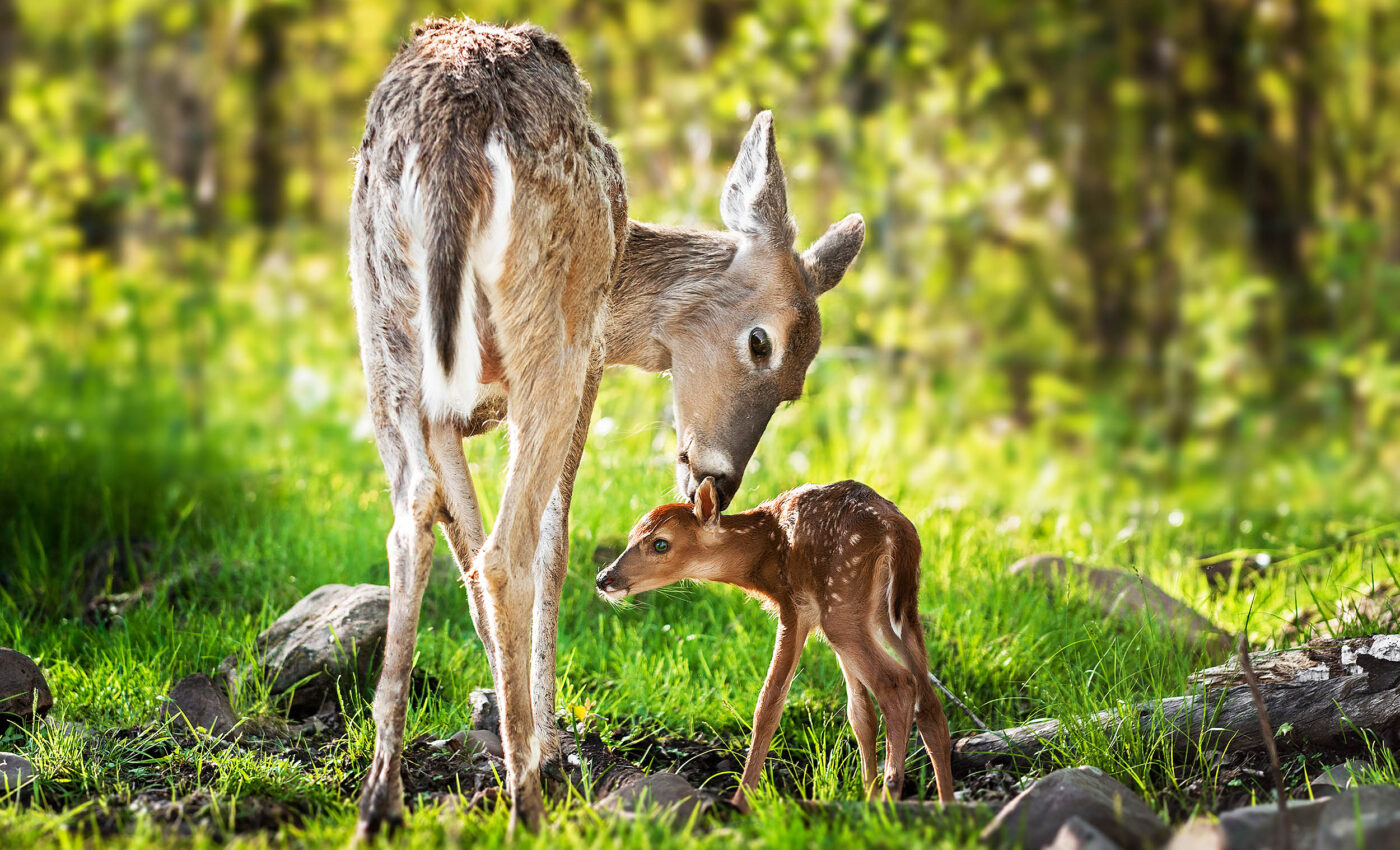
White-tailed deer are migrating north into caribou country due to warming climate
The boreal forest of Western Canada – a vast, wild expanse of trees and waterways – is undergoing a stealthy transformation. White-tailed deer, icons of more southerly landscapes, are migrating northward.
This slow-motion migration, meticulously tracked by scientists at the University of British Columbia (UBC) Okanagan and their partners, is rewriting the rules of the forest, putting a beloved species, the woodland caribou, at further risk.
Changing landscape from migrating white-tailed deer
The boreal forest is no stranger to cold, but climate change is making those winters milder. For deer, those less extreme conditions mean a better chance of finding food and avoiding harsh weather.
Our activities, from logging to energy exploration, inadvertently create open patches and young forests – a buffet for browsing deer.
“The trick is that human land use and climate are often intertwined. As we move northward, the climate becomes harsher and human land use decreases, making it difficult to isolate these two factors,” says Dr. Rob Serrouya, a key member of the research team.
“The debate over the relative effect of climate or habitat change isn’t unique to deer in the boreal, either; it’s one of the most pressing issues facing applied ecologists globally,” Serrouya continued.
Migrating white-tailed deer are disturbing caribou
“Deer are ecosystem disruptors in the northern boreal forests,” explained Melanie Dickie, a doctoral student at UBC Okanagan’s Wildlife Restoration Ecology Lab. The following steps threaten caribou survival:
Deer population increases
Climate change and human activities are transforming habitats. This creates favorable conditions for white-tailed deer in the boreal forest. Their population grows as a result.
Milder winters make survival easier for deer, boosting their numbers. Forestry and energy exploration activities also modify the landscape and clear old forests and introduce new food sources. These changes further support the deer population boom.
Wolf surge
The increase in deer provides a plentiful food source for predators, including wolves. Wolves, being opportunistic feeders, thrive with the abundance of deer, which become their primary prey.
This surge in wolf population is directly linked to the availability of deer, as they rely on them for sustenance throughout the year.
Caribou decline
With more wolves in the forests, the pressure on other native species, particularly the woodland caribou, intensifies. Caribou are less equipped to handle predation pressure due to their slower reproductive rates and specific habitat requirements.
As wolves expand their hunting to include caribou, especially when deer are sparse or in areas where caribou are more accessible, the survival of this already threatened species becomes even more precarious.
Impact of climate change
The research team spent years meticulously monitoring the situation. They strategically deployed 300 wildlife cameras across a huge swathe of the boreal, gathering motion-triggered snapshots of the forest’s inhabitants.
This massive data, once analyzed, revealed those key findings: harsh winters put a natural limit on deer expansion, and while human habitat changes matter, they pale in comparison to the transformative power of a changing climate.
Caribou, migrating white-tailed deer, and climate change
“The trick is that human land use and climate are often intertwined. As we move northward, the climate becomes harsher and human land use decreases, making it difficult to isolate these two factors,” says Dr. Serrouya, UBCO and Biodiversity Pathways researcher.
“The debate over the relative effect of climate or habitat change isn’t unique to deer in the boreal, either; it’s one of the most pressing issues facing applied ecologists globally,” Serroyua concludes.
The white-tailed deer invasion spotlights the interconnectedness of ecosystems – tug on one thread, and distant parts of the web might quiver. Woodland caribou are already facing an uphill battle, and this added challenge throws their future into greater doubt.
The northward march of the deer is a reminder that even subtle climate-driven changes can have ripple effects we must work to understand and mitigate. As researchers continue their work, wildlife management faces a new layer of complexity in their quest to preserve Canada’s iconic caribou.
The study is published in Global Change Biology.
—–
Like what you read? Subscribe to our newsletter for engaging articles, exclusive content, and the latest updates.
Check us out on EarthSnap, a free app brought to you by Eric Ralls and Earth.com.
—–













